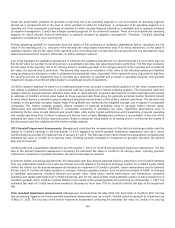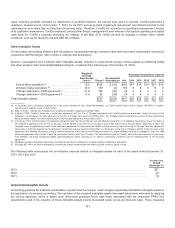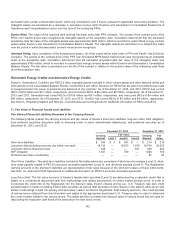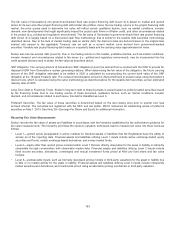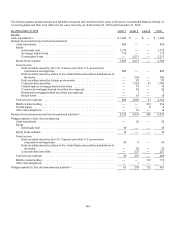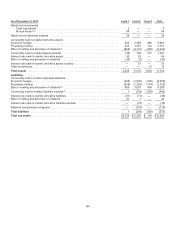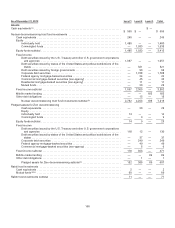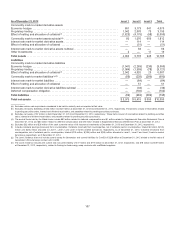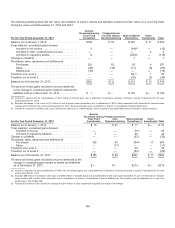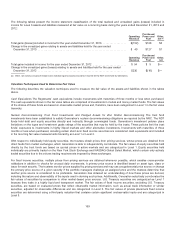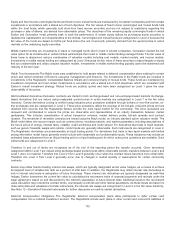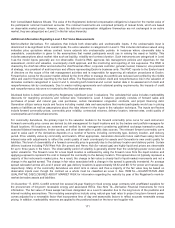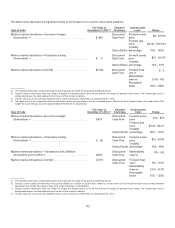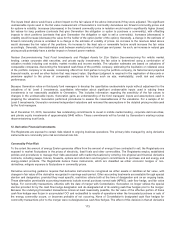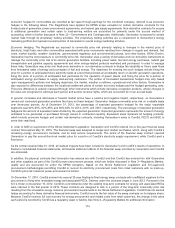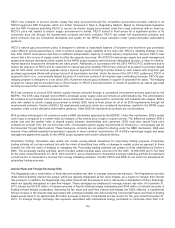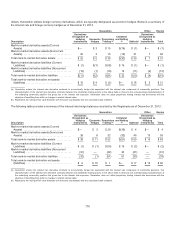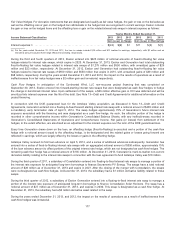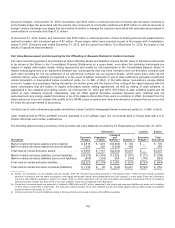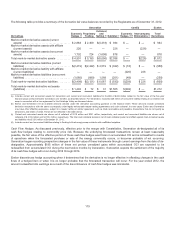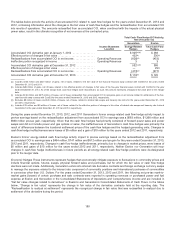ComEd 2013 Annual Report Download - page 176
Download and view the complete annual report
Please find page 176 of the 2013 ComEd annual report below. You can navigate through the pages in the report by either clicking on the pages listed below, or by using the keyword search tool below to find specific information within the annual report.Equityand fixedincomecommingledfunds and fixedincomemutual funds are maintainedbyinvestment companiesandholdcertain
investmentsinaccordancewithastatedset offundobjectives. Thefairvaluesof fixedincomecommingledandmutual funds held
withinthe trustfunds, which generallyholdshort-term fixedincomesecuritiesandare not subjecttorestrictionsregardingthe
purchaseorsale ofshares, are derivedfromobservable prices. Theobjectivesoftheremainingequitycommingledfunds inwhich
Exelon andGeneration investprimarilyseekto track the performanceofcertainequityindicesbypurchasingequitysecuritiesto
replicate thecapitalization andcharacteristics oftheindices. Commingledandmutual funds are categorizedinLevel 2 becausethe
fairvalue ofthefunds are basedon NAVs per fundshare (theunitofaccount), primarilyderivedfromthequotedpricesinactive
marketson theunderlyingequitysecurities.
Middle market lendingare investmentsin loansor managedfunds which investinprivate companies. Generation electedthefair
value option for itsinvestmentsincertainlimitedpartnershipsthat investinmiddle market lendingmanagedfunds. Thefairvalue of
these loansisdeterminedusingacombination ofvaluation modelsincludingcostmodels, market models, andincomemodels.
Investmentsinmiddle market lendingare categorizedasLevel 3 becausethefairvalue ofthesesecuritiesisbasedlargelyon inputs
that are unobservable andutilizecomplexvaluation models. Investmentsinmiddle market lendingtypicallycannot beredeemeduntil
maturityofthe termloan.
Rabbi Trust Investments TheRabbi trustswere establishedto holdassetsrelatedto deferredcompensation plansexistingfor certain
activeandretiredmembersofExelon’s executivemanagement anddirectors. TheinvestmentsintheRabbi trustsare includedin
investmentsintheRegistrants’ ConsolidatedBalanceSheetsandconsistprimarilyofmutual funds. Thesefunds are maintainedby
investment companiesandholdcertaininvestmentsinaccordancewithastatedset offundobjectives, which are consistent with
Exelon’s overall investment strategy. Mutual funds are publiclyquotedandhavebeen categorizedasLevel 1 given theclear
observabilityoftheprices.
Mark-to-Market Derivatives Derivativecontractsare tradedinbothexchange-basedandnon-exchange-basedmarkets. Exchange-
basedderivativesthat are valuedusingunadjustedquotedpricesinactivemarketsare categorizedinLevel 1 inthefairvalue
hierarchy. Certainderivatives’ pricingisverifiedusingindicativepricequotationsavailable through brokersor over-the-counter,on-
line exchangesandare categorizedinLevel 2.Thesepricequotationsreflecttheaverageofthebid-ask, mid-point pricesandare
obtainedfromsourcesthat theRegistrantsbelieve providethemostliquid market for thecommodity. Thepricequotationsare
reviewedandcorroboratedto ensure thepricesare observable andrepresentativeofan orderlytransaction between market
participants. This includesconsideration ofactual transaction volumes, market deliverypoints, bid-ask spreads andcontract
duration.Theremainder ofderivativecontractsare valuedusingtheBlack model,an industrystandardoption valuation model.The
Black model takesinto account inputssuch ascontract terms, includingmaturity, andmarket parameters, includingassumptionsof
thefuture pricesofenergy, interest rates, volatility, creditworthiness andcreditspread. For derivativesthat tradeinliquid markets,
such asgeneric forwards, swapsandoptions, model inputsare generallyobservable.Such instrumentsare categorizedinLevel 2.
TheRegistrants’ derivativesare predominatelyat liquid tradingpoints. For derivativesthat tradeinless liquid marketswithlimited
pricinginformation model inputsgenerallywouldincludebothobservable andunobservable inputs. Thesevaluationsmayincludean
estimatedbasis adjustment froman illiquid tradingpoint to a liquid tradingpoint for which activepricequotationsare available.Such
instrumentsare categorizedinLevel 3.
Transfersinandout oflevelsare recognizedasoftheendofthe reportingperiodthe transfer occurred. Given derivatives
categorizedwithinLevel 1 are valuedusingexchange-basedquotedpriceswithinobservable periods, transfersbetween Level 2 and
Level 1 were not material.Transfersinto Level 2 fromLevel 3 generallyoccur when thecontract tenure becomesmore observable.
Transfersinto Level 3 fromLevel 2 generallyoccur due to changesinmarket liquidityor assumptionsfor certaincommodity
contracts.
Exelon mayutilizefixed-to-floatinginterest rate swaps, which are typicallydesignatedasfairvalue hedges, asameansto achieve
itstargetedlevel ofvariable-rate debtasa percent oftotal debt.Inaddition,theRegistrantsmayutilizeinterest rate derivativesto
lock ininterest rate levelsin anticipation offuture financings. Theseinterest rate derivativesare typicallydesignatedascash flow
hedges. Exelon determinesthecurrent fairvalue by calculatingthe net present value ofexpectedpaymentsandreceiptsunder the
swap agreement,basedon and discountedbythemarket’s expectation offuture interest rates. Additional inputsto the net present
value calculation mayincludethecontract terms, counterpartycreditrisk andother market parameters. Astheseinputsare basedon
observable data andvaluationsof similar instruments, theinterest rate swapsare categorizedinLevel 2 inthefairvalue hierarchy.
See Note 12—DerivativeFinancial Instrumentsfor further discussion on mark-to-market derivatives.
Deferred Compensation Obligations TheRegistrants’ deferredcompensation plansallowparticipantsto defer certaincash
compensation into a notional investment account.TheRegistrantsincludesuch plansinother current andnoncurrent liabilitiesin
170


